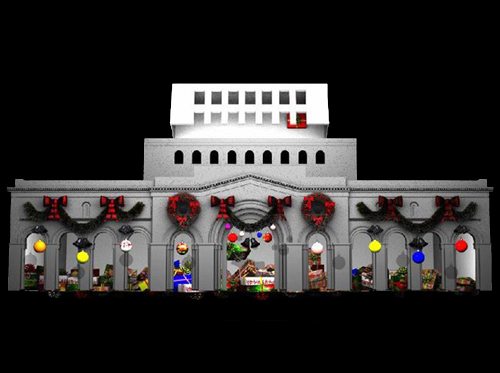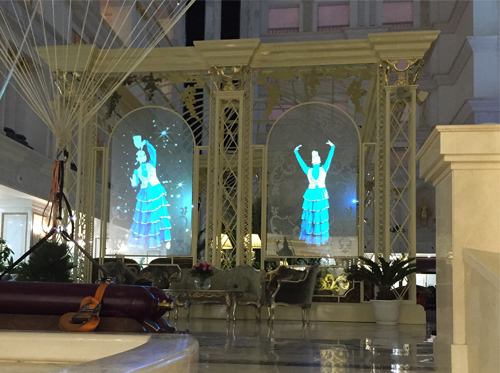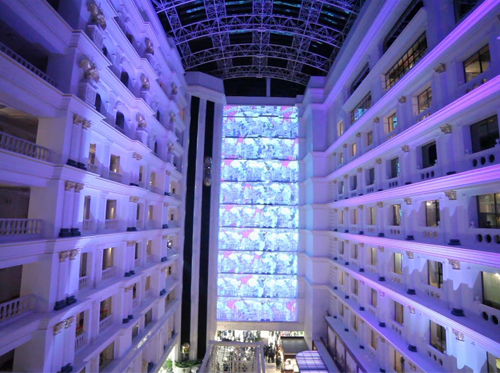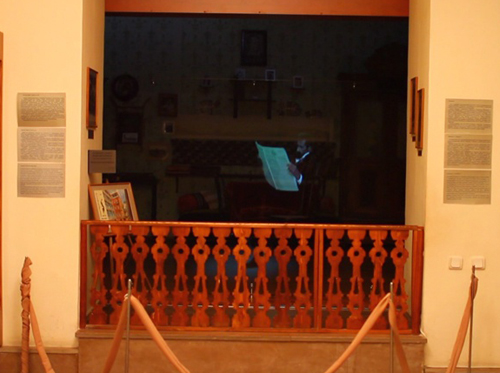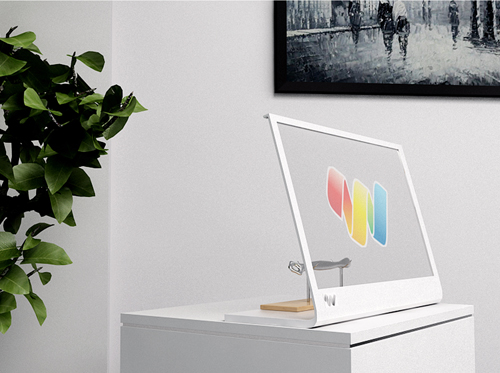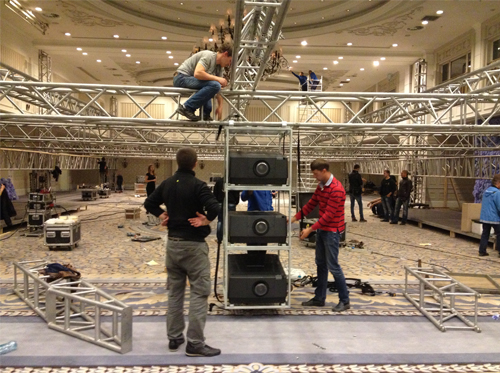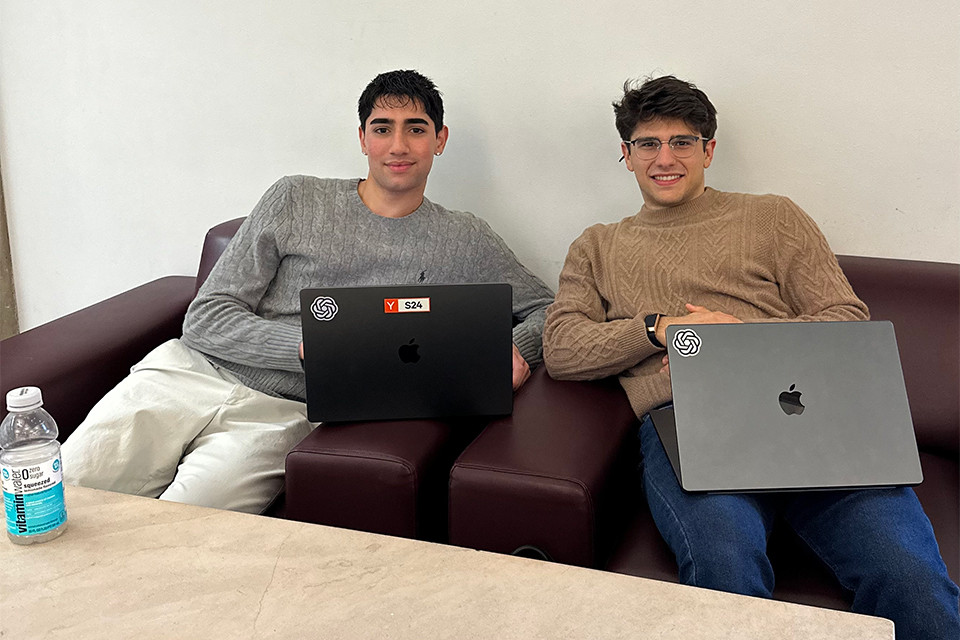Over the past 2 decades, the virtual reality has shifted from the science fiction to real life through 3D technologies.
Itel.am wrote about Yerevan-based Interactive World which develops 3D animation content with innovative solutions such as 3D projection mapping, 3D holographic pyramid, transparent display, 3D game development etc.
The company was set up in early 2010 by Tigran Bayramyan.
“We wanted to fill the gap of innovative technologies in Armenia and present the solutions to the society. Having an idea to come up with non-standard solutions we saw that we could develop it”, the company Director Tigran Bayramyan says.
He notes that they are implementing projects not only in Armenia but Kazakhstan, France and Russia.
“When you imagine what you can get and reach the difficulties become secondary. At first, we had a ready-made imported product but we started offering our own products and software solutions over time when we were engaged in production of transparent displays and holographic pyramids. Some time later, other software solutions were added to the existing ones”, he notes.
One of the company’s projects is the New Year’s 3D show on the building of the National Gallery.
About the market
Technical Director of the company Levon Hakobyan says that they wanted to import technology 5 years ago, while now they create the technology in Armenia, develop and sell it.
The company has implemented a number of projects in Yerevan, but now it’s focused on representation on the foreign markets; they are now represented in Kazakhstan.
“We have figured out that Kazakhstan is a good market. We went there, negotiated and started operation in the country. Now we implement the majority of the projects through the representation in Kazakhstan. Another museum project is being implemented in France. We are not working intensively in Armenia now although we have implemented a number of projects before”, Levon Hakobyan says.
About the prices
According to Levon Hakobyan, although their technologies are pricey they try to provide them at cheaper prices for the Armenian market, and they have already implemented a bunch of programs. Hovhannes Tumanyan’s holographic image in “Vernatoon” room of Hovhannes Tumanyan Museum is one of them; he is walking, taking off his hat and welcoming the visitors.
About the new technology
The company has developed a technology of interactive café which will be introduced on the market in near future.
Levon Hakobyan says the new technology will allow transferring to a virtual world inside the walls of the café.
“Visitors will be able to manage everything around them. For instance, touching the interactive console once they will order something- get acquainted with the menu and dish components, connect to the online kitchen and watch a chef making their order. Before that, a visitor can take part in an interesting interactive game not to lose time. Moreover, a visitor by standing up will find himself on an interactive floor which can turn into an ocean full of fish, for example”, Levon Hakobyan says.
According to him, visitors will be able to draw, play, watch images, clips and movies through touching.
“Interactive technologies are the future of the restaurant business. This technology is in high demand but it’s expensive. Of course, the price is based on the difficulty of the system. We are going to use the technology for the first time in Kazakhstan during this year”, he notes.
About the services
3D architectural projection (Mapping) - is a technology that allows you to project video images on different irregular surfaces. With the help of mapping it is possible to organize shows both indoors and in the streets, which attract anyone's attention and, of course, leave a bright impression. As a rule, 3D mapping is used to broadcast projection shows on buildings. For that purpose, an individual 3D movie is being created for each building’s facade, which outplays with architectural details.
Touch screen systems - It’s possible to solve different problems with the help of sensor systems. Particularly the existence of the touchscreen showcase, working 24/7, can become a great sales drive. Even during non-working hours the showcase can show the range of the store and make sales as follows: The client meets the store's assortment.
Touchscreen showcases and screens with media content can be used in museums and banks, in a word, in any institution where there is a desire to attract the attention of visitors. For example, on the touchscreen monitor in a shopping center you can make installation of an interactive map and facilitate the visitors.
Interactive floor- t is a floor graphics, which responds instantly to any kind of movement. Getting in the interactive projections zone, the man animates video images by his own movements. The thematic design of the floor can be completely different: it may be a virtual football, flower path, underwater world. The system runs automatically and does not require any technical assistance during the operation.
3D holographic pyramid - shows three-dimensional videos and demonstration of characteristics of different products and devices such as mobile phones, cameras, packs of cigarettes, cigars, toys and much more. Such method of presentation is an unforgettable experience in mind of even the most sophisticated audience. Take advantage of this new technology to position your brand as creative and modern.
It is a construction in a form of a cube with two glass screen walls, equipped with a computer, which in its turn is equipped with special software for image management. During the playback of the image appears a hologram floating in the air. It is possible to watch the image simultaneously from different sides. The installation of these systems is provided indoors. The construction can be made in different sizes, as well as it can be installed on any interior object.
Transparent display - LCD monitors without backlight. They invert the white color to transparent areas on the screen and allow you to interact with real objects as part of a virtual content. The images may take the entire area of the screen as well as only part of it, which adds additional visual effects. A person standing in front of the screen can see both the information displayed on and what happens behind the panel. These screens are capable of transmitting a wide range of colors, have the same update frequency parameters as traditional LCDs and can be sensory.
Narine Daneghyan

17:29 | 24.09.25 | Articles
Jacopo Losso on Cross-Border Investments and Why Armenia Attracts Angels

